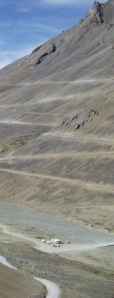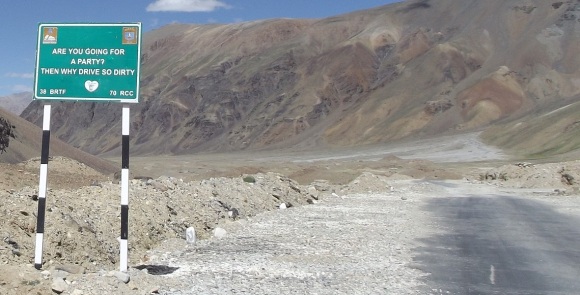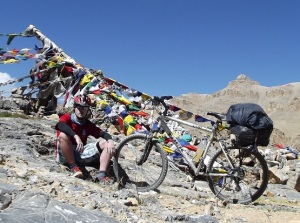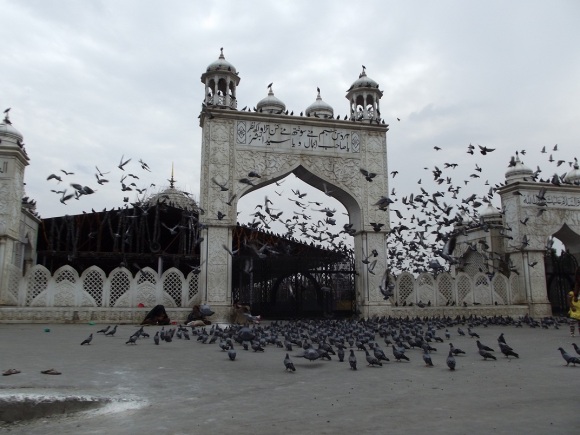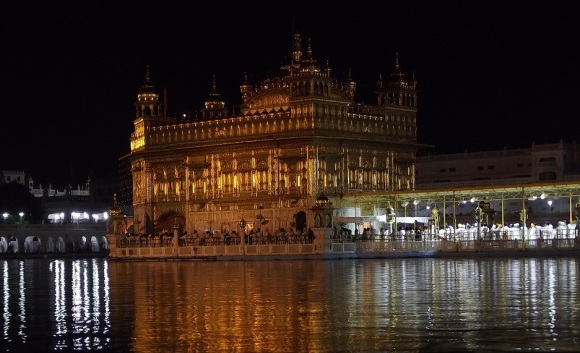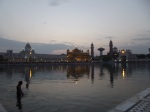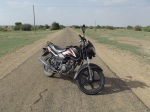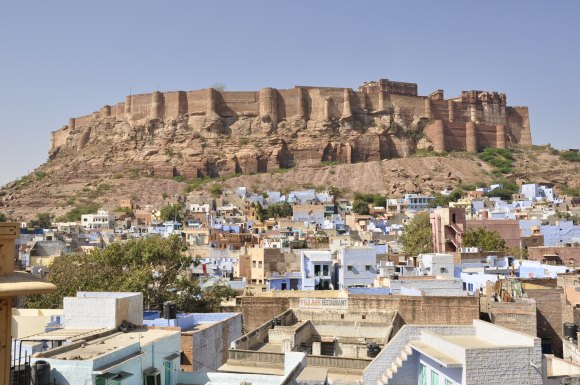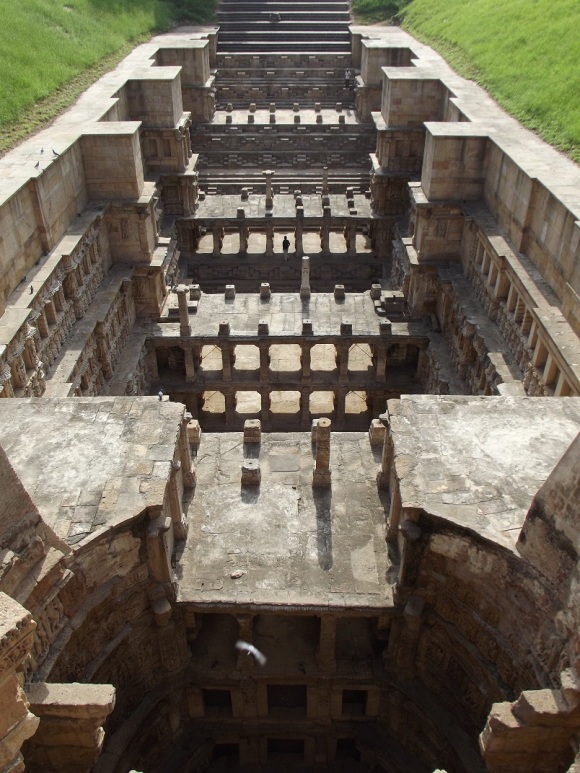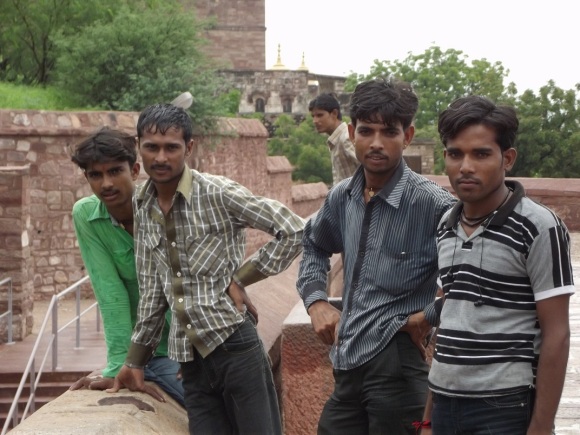King Abdulaziz International Airport, Jeddah, Saudi Arabia. 2pm.
I’ve got a 10 hour layover here to burn, with nothing to do outside of wasting money in the duty free or praying my time away in one of a plethora of prayer rooms. I can’t leave this ‘transfer area’ until my flight at 9.50 tonight, so now’s a very opportune time to update the old blog, wot.
I got here on a morning flight from Mumbai full of pilgrims on their Hajj, all dressed up for Mecca. It was a refreshing change from your average flight: veiled stewardesses, prayers during the safety demonstrations, and a huge cinema-sized screen up front that had a countdown on how many kilometers and what direction Mecca was.
It’s all a far cry from entering India exactly 7 weeks ago today, on a horse and cart that was racing another cart down a track past monkeys playing in the trees next to an irrigation canal. It had been a two day bus journey from Kathmandu and I had spent the time chatting to a couple of lads heading to Punjab to work as door to door salesmen selling clothes magazines. As we arrived at the Indian entry post (it was evident our horse and cart had won – the others were languishing at the last watering stop) we were asked for our Nepalese exit stamps. In the excitement of the horse race, the cart driver had forgotten to stop at the Nepalese side. So we did it all over again…
After a couple of days in Haridwar (where I wrote the last blog post) I made it to Manali, at the start of the Manali-Leh highway. Manali’s an unashamed backpacker ghetto full of spaced hippies washed up from Southern India by the monsoon walking down the street past wide-eyed gap year kids fresh out of France and England’s most prestigious public schools. Most prelavent of all are the resident Israelis recently out of the army, a terribly unfriendly lot roaring around on their ancient Enfields and leaving behind a stench of petrol and pot. I stayed in Manali enough time to meet some cyclists, have a couple of ‘western’ style nights out and buy a bike.
On my search for a bike I met a guy from Thailand who had flown his bike all the way from Thailand to do the same cycle I wanted to do, just for it to be crushed under the wheels of a bus on his first day in India. Rough! We agreed to do the trip together, along with his three friends. Two days later we had both bought decent second-hand imported mountain bikes, stocked up on supplies and hit the road.
The Manali-Leh highway was built in the early 70s to link the region of Ladakh with the rest of India. China had recently trounced India in a border war in the area, and Pakistan was making clear its ambitions, so the Indian government decided it was high time to militarize the mountains. It’s a mammoth engineering project, crossing 5 passes higher than Mont Blanc and through deserts with shifting sands that cover the road every year. It is serving its purpose though and now for 4 months a year the road is kept open so troops and diesel can move through to Ladakh and relieve the 600,000 infantry stationed in grim camps along the borders with Pakistan and China with names like the “Punjab Panthers Camp Sec III” and “Bengal Bombers Transit Station”. In recent years, the army opened the road to the public, and since then motorbikers, buses and crazed cyclists have been added to the mix.
Yut, Ba, Frankie and Nick are all hardcore bikers. They belong to a club in Ranong, down in the South of Thailand, and have cycled long distance routes in China and Southeast Asia before. Yut doesn’t even have a job, so dedicated is he to cycling! They had flown in over 80kgs of food, medical equipment and bike spares from Thailand for the trip, and every lunch we would have lovely green curries, spicy egg noodles and “sticky lai” produced by Yut, who always assumed cooking duties.
It was great cycling with them for those first couple of days, climbing 2080m up to the Rohtang La past avalanches and rockfalls and then down into the Spiti Valley where we stayed in an old barn with a tarp roof before heading on to Keylong. Unfortunately Ba (the oldest in the group, a sprightly 63 years old – Nick’s father) was developing symptoms of altitude sickness as we climbed (by now we were above 3500m) and after a visit to the doctor in Keylong was advised to rest for 2 days. The rest of the guys decided to stick with him, and we parted. I was happy to hear 2 weeks later that after 3 days rest in Keylong they had slowly finished the route to Leh, arriving 10 days after me.
From there I kept going alone over the mountains. But I was never alone for long. The next day I met a Polish guy ALSO suffering from alititude sickness, and had to bolt back down to the nearest army camp to get the ambulance to bring oxygen up to him. I’m lucky that having been at high altitudes in Nepal for 2 months has saved me the pains of acclimatization.
On and up, through places with increasingly ridiculous names. Pang, Whiskey Nala, Zingzing Bar, Baralachala … I think the lads who wrote the map were just having a laugh (or too much whiskeynala).
And I kept on meeting cyclists! A German student who had cycled from the Black Forest to Southern India on a charity cycle with a friend (their blog here [in German]) and had taken “a small detour” to cycle the highest road in the world. Later a French business man who had flown his foldup bike from Paris and was happily cycling the highway for his summer holidays. A Norweigan real-estate agent on his 12,000 euro custom-made all titanium bike with his support vehicle horsed it past me one day and finally a Spanish guy who taught me how to “Lorry surf”, which requires a tight grip and nerves of steel as you grab on to the back of a lorry with one hand and balance the rest of your overladen bike with the other, thereby getting a free lift up the hills. Most of the Indian truck drivers loved this and encouraged it with hoots of laughter and much thumbs-up. I only stuck with the Spanish guy for a couple of hours before he bolted off on another road to Tso Mori. Probably a good health decision: I didn’t have the guts to lorry surf on my own.
Cycling the Manali-Leh highway was an amazing experience. It was by far the toughest thing I’ve done, and yeah it wasn’t all fun. I haven’t written about being reduced to tears from the sheer exhaustion of climbing Nakila-la, spending 3 hours trying to hammer my chain back together in the blistering heat after it snapped in the desert, having the shits all the way up the 22 switchback Gata Loops or dragging my bike (which weighed 32kgs with bag attached) through 10kms of sand in the Morei Plains. All “character building” experiences I’m sure. But these low points are vastly upstaged by the high points: the day Yut cooked lunch for us and a busload of Ladakhi women on an Alps-esque pasture, cycling down from Baralacha-la to the sounds of The Beatles while winding around psychadelic columns of rocks rising 50 metres to points in the blue sky, drinking army bootleg rum one night by the highway with the one-handed proprieter of a tent-hostel (who kept rats as pets), and the 63km downhill from the top of Taglang-la, descending 1900m in just over 3 hours.
And so 9 days after leaving Manali, covered in sand and very hungry, I squeaked into Leh.
Leh was on the old Silk Route, and used to be an important trading post between the Persian part of the world and the Tibetan. It’s a beautiful old town in the middle of nowhere, 200kms away from the nearest town of notable size. It’s totally been discovered by fly-in tourists (grumblegrumble) but hasn’t really suffered for it. I checked in to an old mansion run by a really old woman and spent a couple of days eating my way around the amazing choice of restaurants in town. Pizza, shwarmas, thukpas, thalis, stroganoffs, kimchi chigaes, fish&chips, apple pies… all went down the gullet (and quickly out the other end unfortunately… my stomach hadn’t quite resolved its differences with me). The lady of the guesthouse had a deal with us that if we did manual labour, she would cook up a dinner so at times we were employed hauling water in from the street or weeding the veggie garden. Worked well for everyone. She also taught us how to make momos (mandu, dumplings, whatever they’re called) and sent us off one morning at 6 o’clock to see the Dalai Lama.

Tsavo guesthouse. Best place I’ve stayed. I shared it with Dutch, Czech, German, English, Indian and Canadian backpackers
I had heard rumours along the highway that the Dalai Lama was in town. Some people said he was cruising up and down the street regularly, visiting monasteries and schools in what I envisioned to be some sort of Popemobile. Others said he was closeted away in meditation in the mountains. Either way, I hadn’t held out much hope of catching a glimpse of the great man but as luck had it catch a glimpse I did. He was giving lectures in a field near Leh for a couple of days soon after I arrived – after indeed meditating on a mountain for two weeks – and the lectures were open to the public, so we went along. He’s a natural speaker and would often crack jokes in the middle of his talks. He spoke in Tibetan, which was then translated into Ladakhi and then into English, so the punch lines of his jokes took a while to go around the 10,000 or so people sitting around the podium the field. He spoke about self-discipline in Buddhism, how Buddhism isn’t suited to everyone and had some interesting thoughts on the Higgs Boson particle. Then he went deeper into Buddhist philosophy and I didn’t really follow but still, I got a sense of the type of person he is. Very impressed.
I could have happily stayed another week in Leh but the visa was getting short – I only had 3 weeks left in India, so I decided to hop back on the bike for a last blast up to the highest road in the world.
I cycled up the Indus valley with some guys from the guest house, visiting some ancient buddhist monasteries along the way. They were really into their buddhism but to me one monastery is like another once you’ve seen a couple, and I usually abuse the cool interior of their sanctuaries for a snooze if I’m cycling by.
They turned back on the second day and I headed over Warila to the Nubra Valley. It’s a surreal barren valley with random bits of greenery where over the generations people have carefully managed the scant water sources they have to create oases of farmland in the middle of the desert. I had a great day cycling as far as you can go until the military blocks the road at Turtuk, for this is the frontline of the Pakistan-India problem, where war has broken out 4 times over the past 40 odd years.

Turtuk, near the Pakistan border. The people here are Balti, and some of their kids have blond hair and blue eyes. So different from the rest of India. They are cut off from their families 50km down the road by one of the biggest troop buildups in the world.
After a day relaxing, reading and eating apricots off the trees in Turtuk I finally cheated and threw the bike on top of a jeep-bus which took me up the long long climb to Khardung-la, the ‘highest road in the world’. In my defence, I had already come over Taglang-la and Wari-la, both just 30m lower than Khardung-la, and had eaten QUITE A BIG CURRY THE NIGHT BEFORE, OK??! But yeah, I was a bit ashamed at riding up the hill in a jeep instead of the bike. At the top, I met some nice English day trippers who had also taken their bikes up on the roof of the bus and we guiltily cycled down together into Leh, racing down the roads as the sun set behind the Himalayas.
THE SEVEN PASSES FROM MANALI TO KHARDUNG-LA

5. Taglang-la (5328m). The sign reads: “You are passing through second highest pass of the world. Unbelievable is not it?”
Thus ended the bike times. I sadly sold it to a nice bike mechanic in Leh, who gave me a very good price for it, and took the bus to Srinagar. It was horrible to be back on buses again.

First day back on the Indian roads: A digger falls down a hill. The driver had probably just sold his bike
From then on it’s been comparitively tame.
In Srinagar I hung around with a Kenyan backpacker for a couple of days who just happened to be a muslim, a big plus in the muslim heartland of militant Kashmir. We spent a day touring the mosques, and because I was with him I could get in to the sanctuaries other tourists wouldn’t have been allowed. I chatted with a group of young beardy lads about Kashmir, and they asked me loads of smart questions about Ireland. The most intelligent discussion I had in India was in a mosque with a group of possibly militant-minded conservative Kashmiris.
In Amritsar I stayed in the Golden Temple for 3 days. It’s a stupendous operation that welcomes literally tens of thousands of Sikh pilgrims every day from all over the world who come to see and venerate their holy textbook, which resides in the middle of a pond in a solid gold temple. Awesome.
Everything’s free in the Golden Temple – everybody sleeps in the dormitories, which hold thousands of people every night; the canteen feeds everyone who passes by – 1000 people every 5 minutes – in an insanely efficient system that depends on volunteers. We volunteered for a while washing dishes, much to the mirth of the big-bearded Sikhs. We stayed up all night to see the ceremony at 2am where the holiest of holy men (who also seem to have the largest beards and turbans) carry the sacred Book from a temple on the shore out the walkway to the Golden Temple on the pond.

Meeting Mr. Singh at the Golden Temple. He came up to me asking for a photo. I didn’t dare turn him down
But it’s not all a happy history at the Golden Temple. Sikhs are very independently minded, and have been wanting their own country for quite some time. In the 1980s a group of militant Sikhs took control of the Golden Temple complex and began administering themselves beyond control of the Indian police. By 1984 tensions were high and India’s president Indira Gandhi (no relation to the Mhatma) ordered army troops to attack the complex, codenamed operation blue star. The Indian Troops couldn’t get past the Sikh snipers positioned on the temple roofs, and so started shelling the compound, destroying thousands of years of history and killing hundreds of pilgrims inside the complex, as well as some of the militants. Eventually the Indian Army won, but had lost any respect of most of the people of India and 6 months later President Gandhi was assassinated by her Sikh bodyguards.
After Amritsar I took a train to the Western desert state of Rajasthan and rented a motorbike for 20 euro for the week. I drove around the state in a huge 1600km loop on my trusty steed – a 2011 110cc TVC.
In my defence to the Honorable Mother, I was offered much more powerful bikes to drive such as a beautiful 1985 Enfield Bullet 350CC but declined because I didn’t trust myself on such a powerful bike. Plus, the TVC had a fuel efficiency of over 60km/l (3 times that of an Enfield). For my first tank of petrol I drove 620km!
Sorry, I digress.
I drove from Pushkar (yet another Hindu pilgrimage site, zzz) out to Jodhpur (the ‘blue city’) where I visited Mehrangarh Fort, a monstrosity of a palace on top of a rock overlooking the desert and the surrounding blue-whitewashed city. The audio tour of the fort was fantastic, partly narrated by the royal family themselves (who ruled until the 40s, and then built an even bigger palace on the outskirts of town part of which is now one of the most luxurious hotels in the world). The palace was full of beautiful swords, paintings and furniture, all with stories attached. It’s hard to describe. I suppose you’d have to imagine something like having an audio tour of Buckingham Palace narrated by Queen Lizzie herself, barking away about her favourite courtyard where she used to play hide and seek as a child.
On I drove into the desert, through Jaisalmer (‘the Golden city’) to Kuldhara where I discovered an abandoned town (abandoned overnight when a different royal family poisoned the wells in retaliation for the local chief turning down a marriage proposal for his daughter, apparently). The roads were arrow-straight – traffic limited to the odd camel, cow or turban headed warrior on a honda moped – filled with hundreds of Hindu pilgrims walking barefoot the hundreds of scorching kilometres to Ramdevra, a shrine near the Pakistan border that has recently become popular because it apparently repelled Pakistani soldiers who, during their most recent incursion in the area attempted to destroy statues of the hindu gods but were blinded before they could carry out their dirty deed. Nowadays, the shrines receive hundreds of thousands of devotees.

Kuldhara, way out in the desert near Jaisalmer. There are 84 such abandoned villages within a 20km radius of each other
I crossed into Gujarat, where greenery appeared and I was into real rural India. In the middle of a large ambling small-time farming area is the Ranniki-vav step well, a fairly jaw-dropping structure that goes 30m into the ground complete with thousands of religious carvings and beautiful pillars holding up the upper levels. I had the entire park to myself, and wandered deep into the well along the little ledges that run around the edge. Amazing. Eventually a security guard turned up, took charge of my camera and started taking photos. Thanks Mr. Patel!
Not too far away I visited the Sun Temples at Modhera, which have the most detailed carvings I’ve ever seen. Again, no tourists had found the place and I wandered amongst the pools and bats and gargoyles by myself. I have to say I don’t know anything about the history of these places – only heard about them from blogs – but they were beautiful places to visit and well worth the drives down little country lanes.
And so ended my motorbike tour and my tour of Northwest India. I scooted up to Udaipur (overrated by guide books and blogs, but a nice place for a sundowner nonetheless) and then back to Pushkar via the jungles of Ranakpur to return the bike. 1600kms and only one puncture as proof of the wears of the road. I much recommend the tacky TVS!
Three days later my train screeched to a halt in Mumbai. Mumbai – what a place. Wish I had had more time there. Boulevards of colonial buildings crumbling away in the tropical heat, a train station more grand than any I’ve seen in Europe that had Queen Vic still standing disapprovingly on top, old libraries full of teak desks overlooking vast parks where students played some serious cricket beside the busy streets. Busy streets that led to the craziest markets I’ve seen. Fish, chickens, spice, tea, saris, opium… everything’s for sale. A hawker with a cart full of wicker baskets shoved one in my face and said “Seunayk, you buy”. I turned him down. He tried again, this time enthusiastically opening the basket to reveal a black snake coiled inside. I didn’t buy the “seunayk”. Later I went to a crazy Bollywood film in a 200 year old theatre, checked out some Indian contemporary art and drank Kingfishers with some Norwegians down at Leopold’s by the causeway. OK, I’ve just described the old colonial districts of Colaba and Fort, the only two areas I could cover in a day’s walk. Outside of this I’m sure Mumbai is a very different animal, but I was quite happy to spend a day in a bubble that reminded me of Europe. Apart from the seunayk.
So how was India? I had a great time. Granted, I wasn’t in ‘real India’ for most of my time there (Ladakh I would consider more like Tibet and Kashmir is quite seperate culturally), but I loved the diversity of the areas I passed through, the genuine friendliness and willingness to help from random people on the street, the possibility of always bumping in to some festival or pilgrimage party along the way, the food, the amazing guesthouses… but some aspects of traveling in India can be quite tough, and take quite a bit to get used to:
In India, you’ll struggle to deal with:
THE BEGGING
Beggars are everywhere in India. Outside the temples and mosques reading prayers, tapping on your window at the traffic lights, tugging at your sleeve in the streets, approaching you with open hands in restaurants and at the train station. One day in Jalandhar station I carefully watched a little girl begging from passing trains. She was wearing rags, was barefoot and her dirty face was smeared with tears. She would walk slowly along the carriages sobbing and piteously ask the passengers for some rupees. And most Indians do give to beggars; they’re a very generous people. This little girl – who couldn’t have been more than 8 – would get 1, 2, 5, 10 and sometimes even 50 rupees from the majority of the people she approached (US$1 = 54 rupees). Maybe one in five people would turn her pitiful face down and refuse to give her anything. I watched her do this multiple times with multiple trains and each time she’d get the same results.
The strange thing was that when there were no trains in the station she would run to the end of the platform where she would start playing with other little kids who were the ‘rubbish walas’, collecting empty bottles and such from under the trains. They would play away for a couple of minutes, screaming with laughter and having great fun before the next train rolled in, when she would resume her sobbing at the windows and the others would climb under the train to retreive any new bottles. I figured that at a busy station such as Jalandhar, this girl and others like her could make a tidy income.
Let’s say your average train has 14 carriages, each with 6 windows. 1 train passes through the station every 20 minutes (it’s on the main line from Amritsar to Delhi), and let’s say she works a 9 hour day (with an hour’s lunch break where she runs down to the nearest gurdwara for a free meal). She works a six day week and has a day off on Sundays when she goes down to the river with her friends.
6 windows (-2 who turn her down) X avg 3 rupees each = 12 rupees
14 carriages X 12 = 168 rupees per train
1 train every 20 minutes X 8 hours work = 24 trains per day
24 trains X 168 rupees each = 4032 rupees per day
6 days per week X 4032 = 24,192 rupees per week
52 weeks per year = 1,257,984 rupees per year ($23,296 / £14,180/ €18,775)
Now, i’m not saying this little beggar girl is actually filthy rich. More than likely she has a very tough life. Perhaps she is an orphan who really does live on the streets. Maybe someone steals a large part of her earnings in return for ‘protection’, or a safe place to sleep. But too often I see these little ‘orphan beggars’ running back to a woman or man at the side of the street and handing them the takings. Someone is making a lot of money.
Oh, by the way the average yearly income per household in India is $1371.
THE STARING
Indians stare at foreigners the most out of any country I’ve been to. This can range from a casual eyeballing as a businessman stops at a traffic light while I walk past to an open-mouthed, incredulous 5 minute gawk from a group of students as I eat a samosa on a bench. At the start I just couldn’t handle it. I’ve always been taught that staring is the height of rudeness. For my first two weeks in India I tried to fight it. I would say ‘hello’ to the starers, at which point they would stare silently back at me all the more intensely. When this didn’t deter them, I tried to ‘fight fire with fire’, and would stare back at them balefully, at which point they would stare back at me all the more intensely. Sometimes I would crack and ask: “WHATAREYOUSTARINGAT?!!”, at which point they would stare back at me all the more intensely, and the group would grow.
But after a while I realized that there was no offense meant by this act of staring. Staring at uncommon things in India is considered perfectly normal. In Haridwar, a horse was dying a slow and agonizing death in the middle of the street, watched idly by a large crowd of people. I joined and, appalled by the sight of the spasming horse trying to catch its last breaths, asked the Indian guy I had been chatting with why nobody would just kill it humanely. I can’t remember his answer, but remember that he spoke a bit louder than normal, and the crowd, hearing English spoken, hushed and turned their stares on me. For the next minute or so, as the horse died an excruciating death in front of us all, I watched it die, and they watched me.
Then there’s the rubbish, the cows butting past you in the street, the flies, the flies, the flies, the scams… but the good things in India definitely outweigh the bad:
In India, you’ll love:
THE TRAINS
THE CHAI
MULTICOLOURED CLOTHING
LASSIS
RICKSHAW WALAS
THE HIMALAYAS
MASSIVE TURBANS
1 DOLLAR THALIS
CHILI PAKHORA
THE RELIGION
THE SAMOSAS
THE PEOPLE…
On the Mp3 Player:
Lost in Translation (soundtrack)
Pearl Jam – Rearviewmirror
Mark Hollis – Mark Hollis
Led Zeppelin – Physical Graffiti
Lanternfish – Volume One: The Instrumentals
Max Richter – Songs from Before
The Bad Plus – These Are The Vistas
The Beatles – Abbey Road
Books near at hand:
Noam Chomsky – ‘Hegemony or Survival’
Steven D. Levitt and the Stephen J. Dubner – ‘Freakonomics’
Mhatma Gandhi – ‘My Experiments with Truth’






